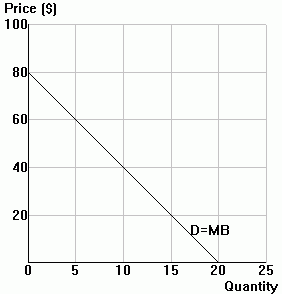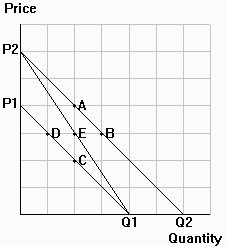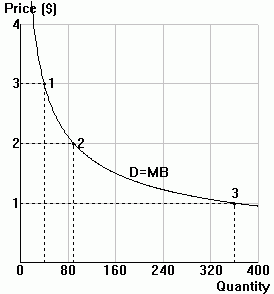|
1. |
Based on the data from the "Elasticity review" worksheet, fill in the following table with the appropriate months and arc elasticity values (available online: Arc elasticity calculator (Excel)): | ||||||||||||||||
|
|||||||||||||||||
| Calculations: (1) own-price arc
elasticity: |[(68-62)/65]/[(108-109)/108.5]|=10 (2) income elasticity of demand: [(70-65)/67.5]/[(2100-2000)/2050]=1.52 (3) cross-price elasticity of demand: [(70-62)/66]/[(111-110)/110.5]=13.39 |
|||||||||||||||||
| 2. | Indicate whether the cross-price elasticity of demand is positive or negative for each of the following pairs of items: | |
| a. | Tennis rackets and tennis balls: negative (complements) | |
| b. | Peanut butter and jelly: probably negative (complements to most people) | |
| c. | Hot dogs and hamburgers: positive (substitutes) | |
|
3. |
Consider the following demand for rock concert tickets: Qd = 20 - (1/4)ĚP | ||||||||||||||||||||||||||||||||
| a. | Complete the following table |
 |
|||||||||||||||||||||||||||||||
|
|||||||||||||||||||||||||||||||||
| b. | Plot the demand curve in the diagram to the right. See diagram | ||||||||||||||||||||||||||||||||
| c. | At what price is total expenditure (TE)
maximized? How does TE change with price before and after that? Are you
surprised? Why or why not. P=$40. Before that price, TE rises as P falls, and after that price TE falls as P falls. Not surprising. P and TE move in opposite directions when demand is elastic and in the same direction when demand is inelastic.
|
||||||||||||||||||||||||||||||||

